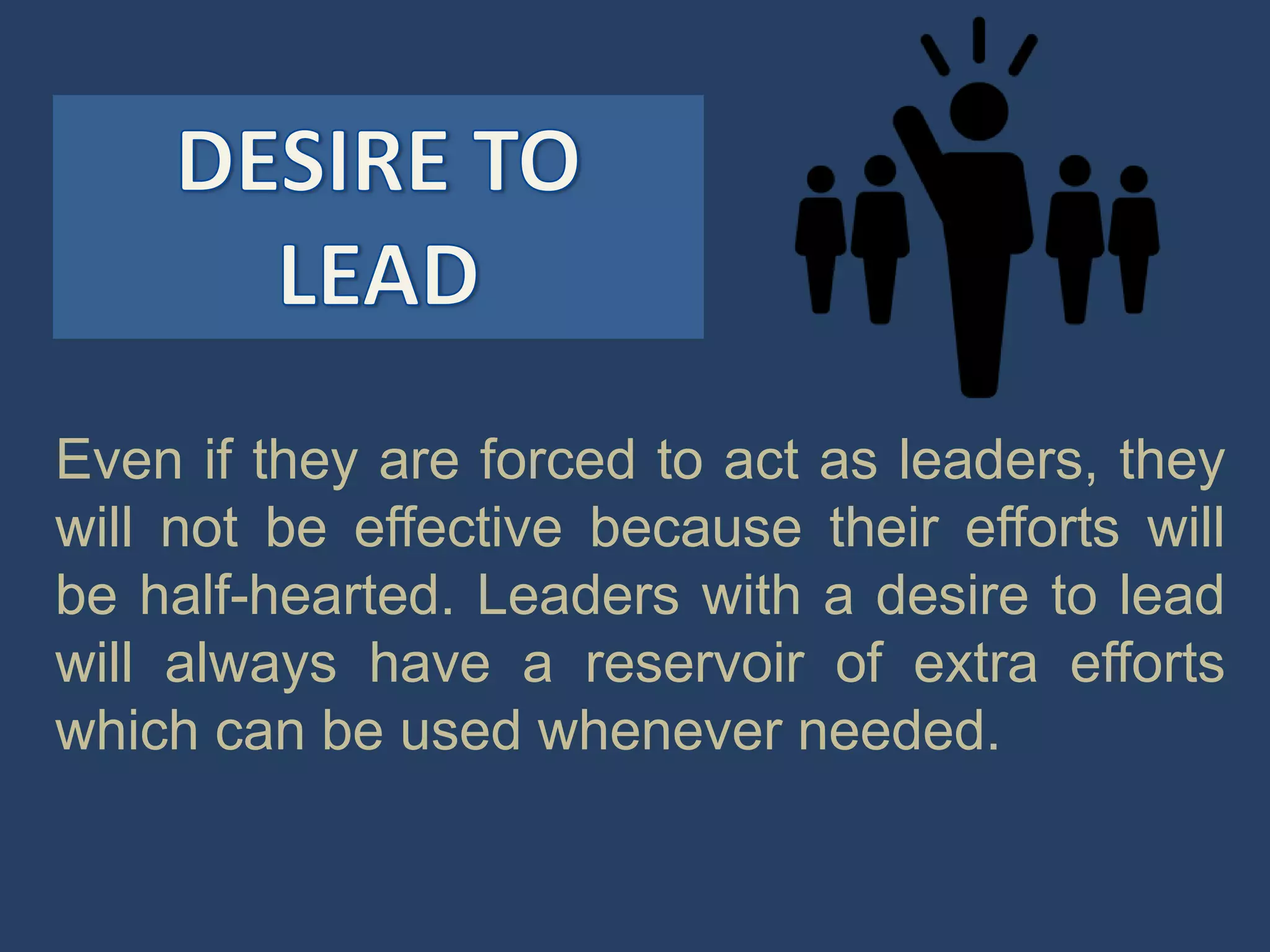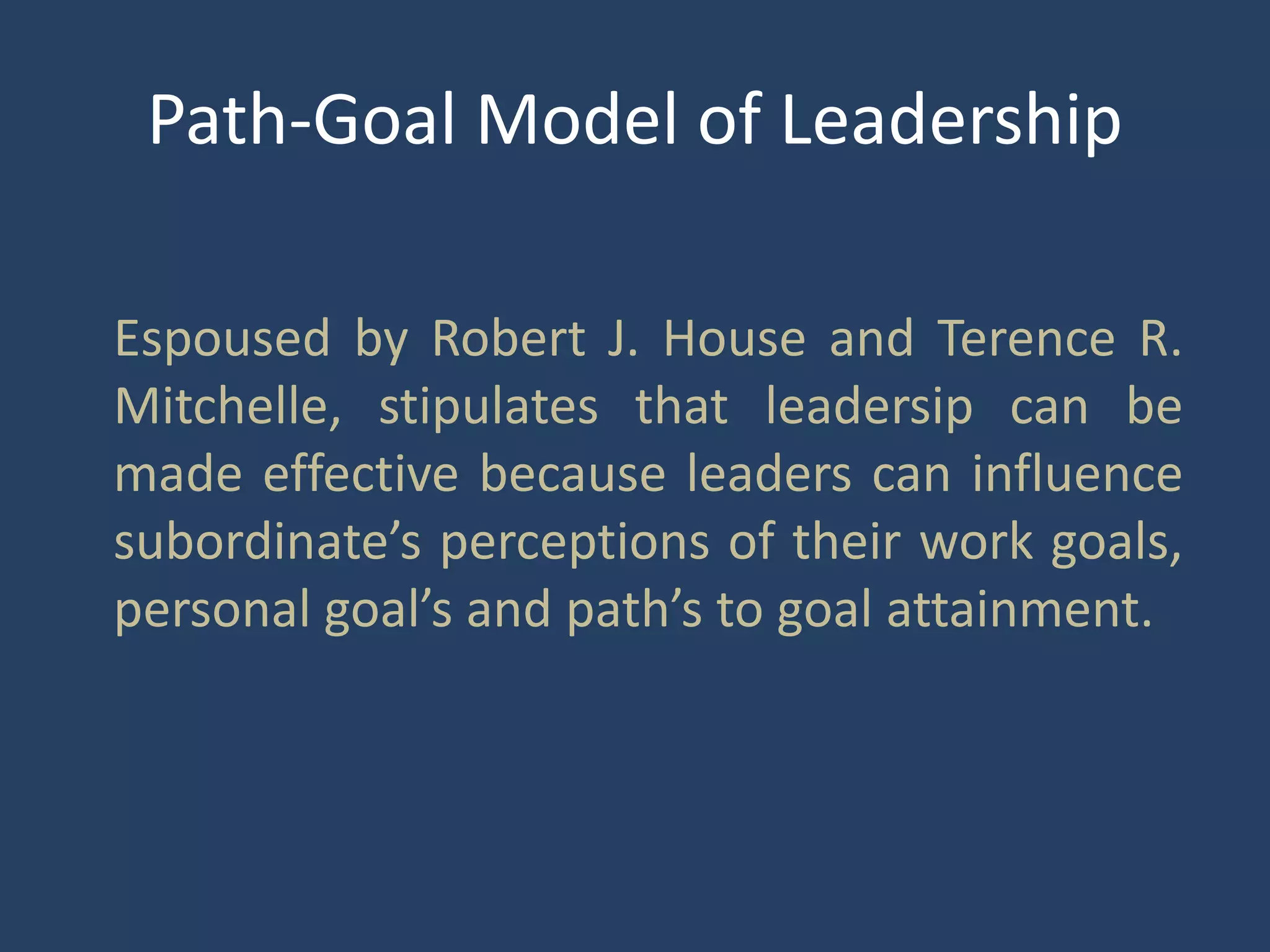This document summarizes various leadership theories and models. It discusses the key concepts of leading vs leadership, the bases of power, traits of effective leaders, leadership skills, behavioral approaches to leadership styles based on how leaders approach people and use power, contingency approaches including Fiedler's model and situational leadership model, and Vroom's decision making model. The path-goal model is also explained which suggests leaders can enhance motivation by clarifying goals, linking rewards to goals, and explaining how to achieve goals and rewards.





































